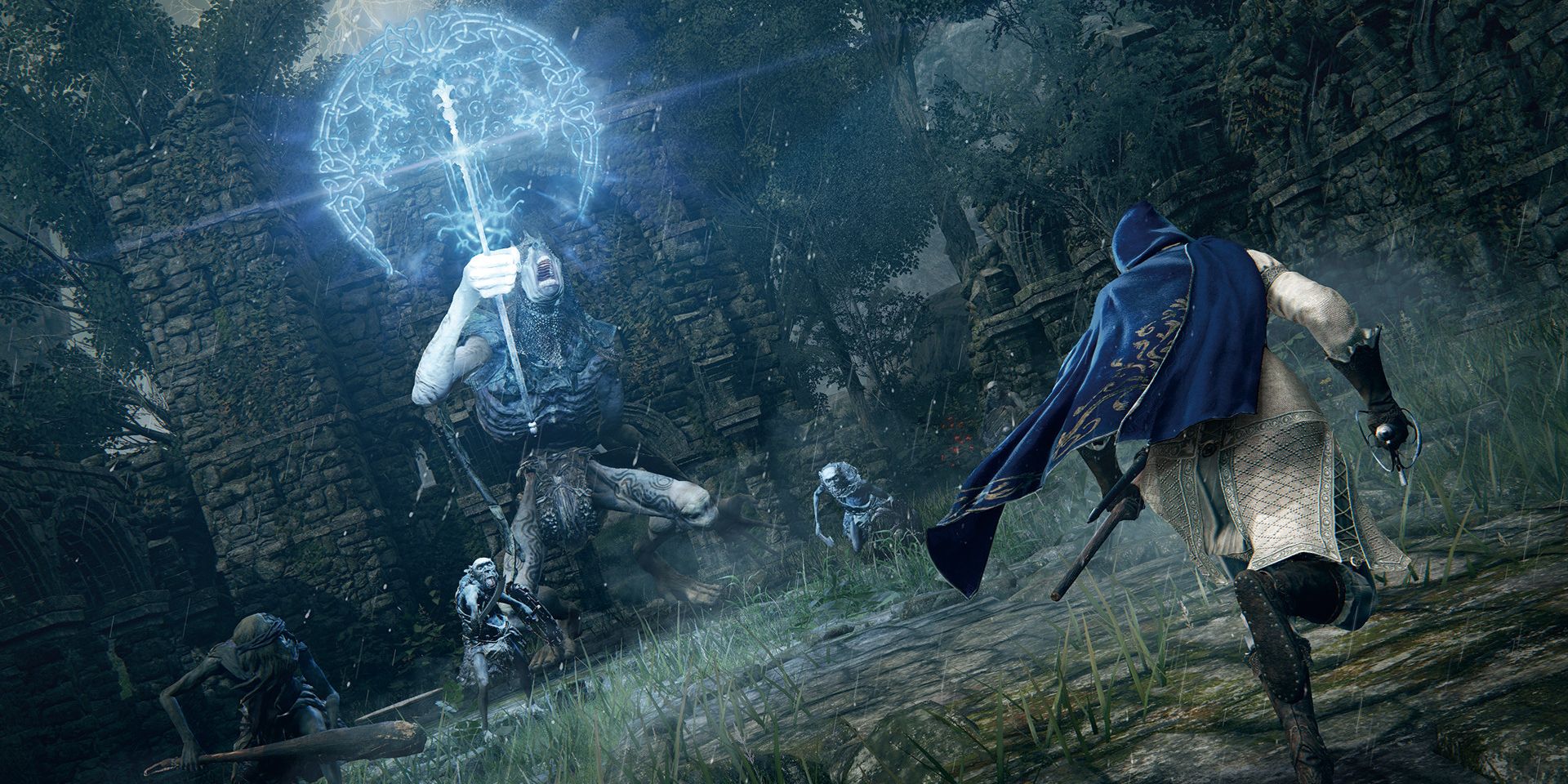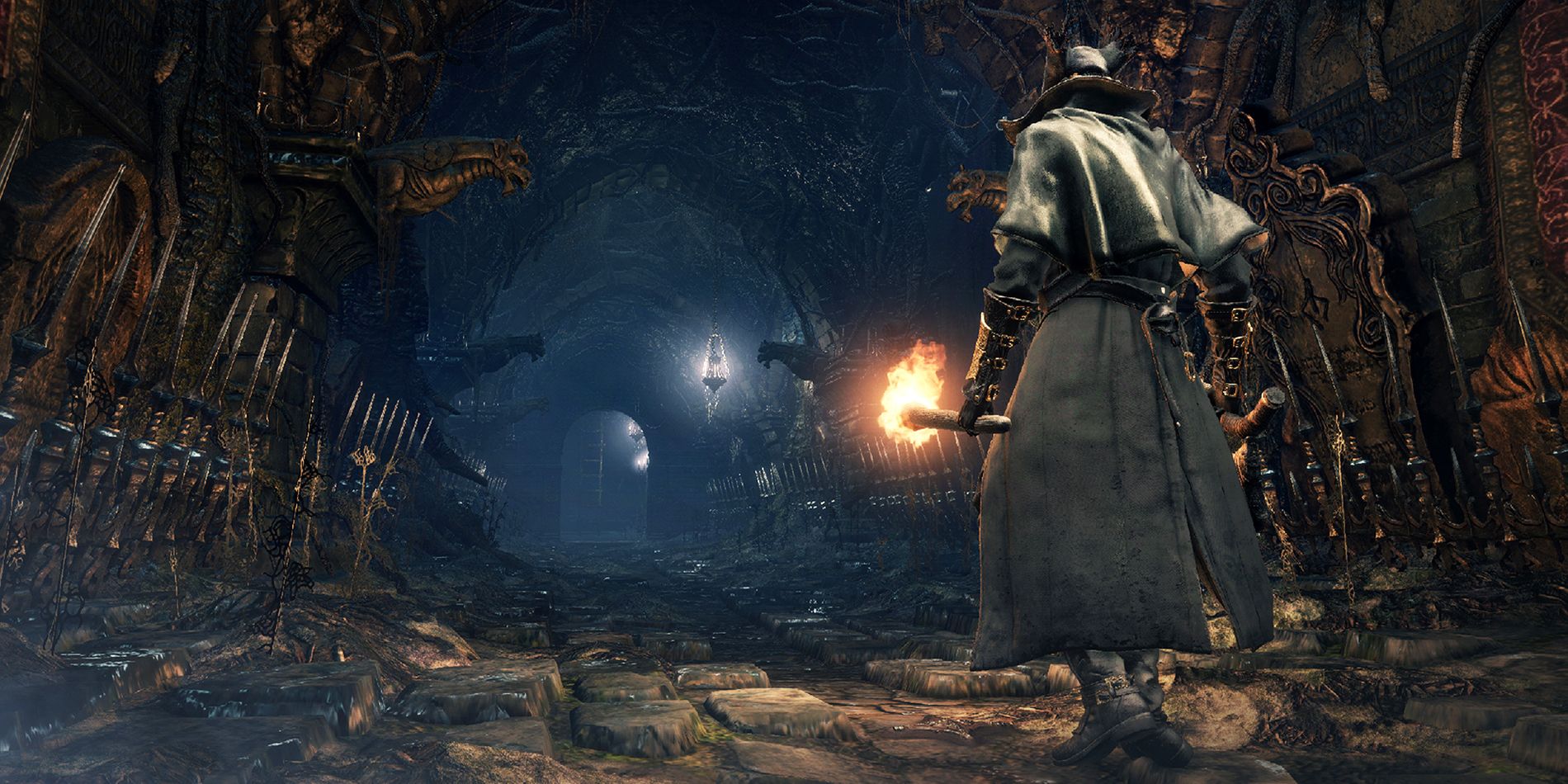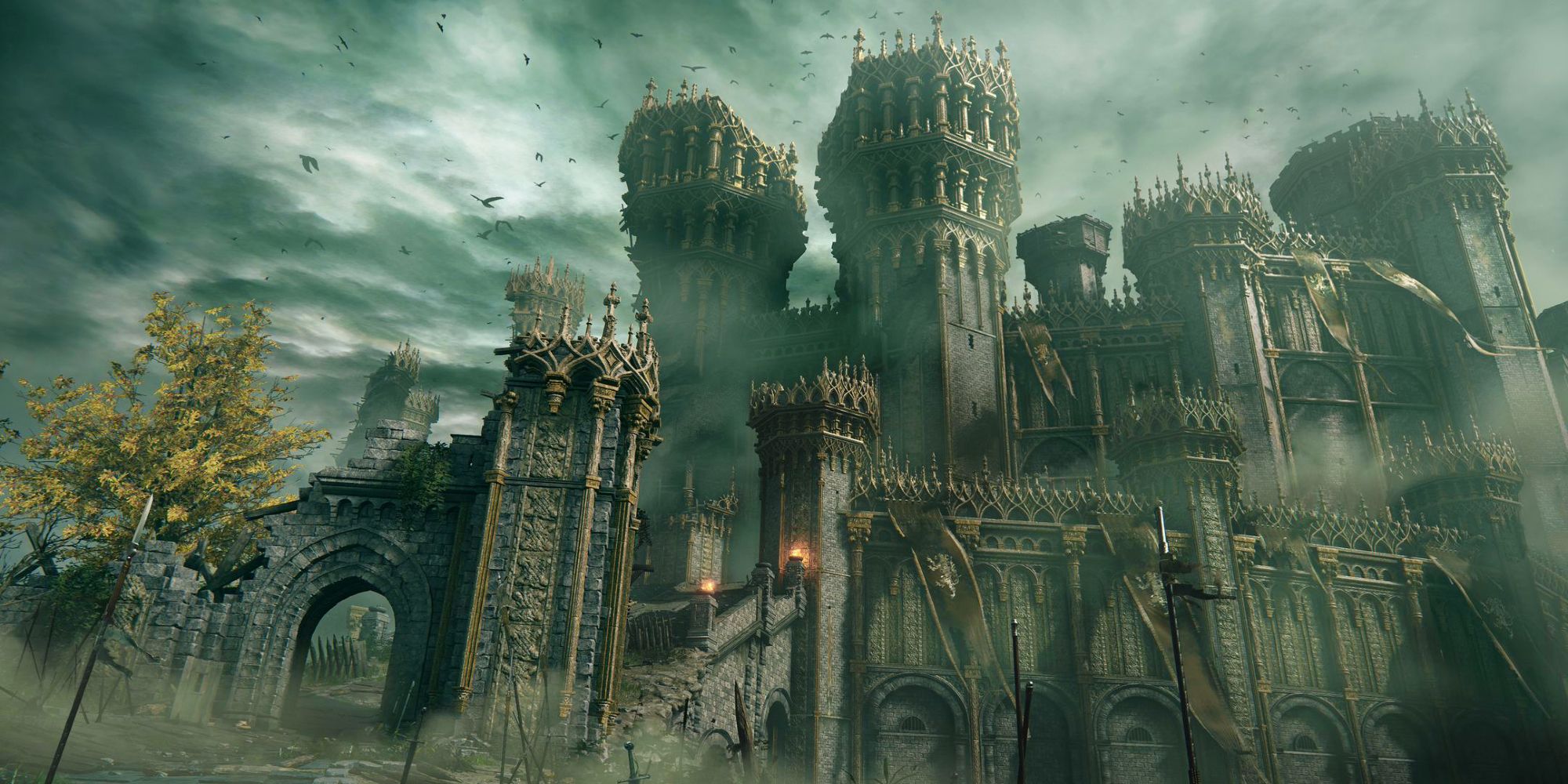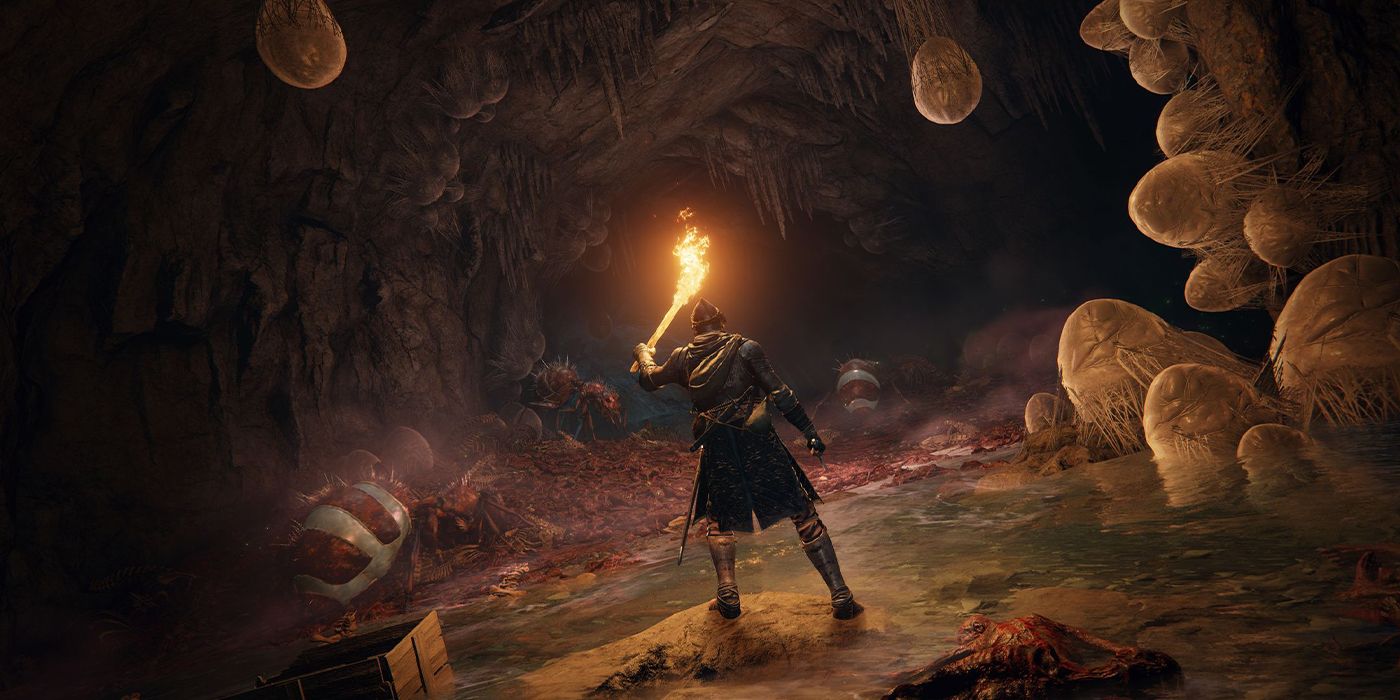The newest FromSoftware game, Elden Ring, has a multitude of dungeons for players to explore, and they're much better than Bloodborne's Chalice Dungeons thanks to one simple change. Elden Ring has had fans captivated since its announcement, and its release has already been met with high acclaim. Those familiar with FromSoftware's previous titles may see the difference plainly, and those who didn't enjoy the Chalice Dungeons of Yharnam are likely enjoying the improvement.
Elden Ring takes place in The Lands Between. Once ruled by Queen Marika the Eternal, it's a land of monsters, warriors, and dungeons. It's split into six different areas, each with a multitude of dungeons that players can explore and fight their way through in search of valuable loot. Bloodborne is set in Yharnam, a plague-ridden city full of madness. There are beasts around every corner, and Chalice Dungeons that players can venture into deep beneath the city streets. Elden Ring is more Bloodborne than some think, but the differences between the dungeons are noticeable, and for the best.
Bloodborne's Chalice Dungeons are vast, with multiple bosses and countless minor enemies, but their size means that they're a bit of a slog. Elden Ring thankfully hasn't copied their formula, and its dungeons are much easier and quicker by comparison. The game has made a few changes in the way players delve through hazardous areas in search of treasure, which experienced FromSoftware fans might say is a good thing. It is, however, a matter of opinion; some might revile the dungeons of Elden Ring while singing the praises of Bloodborne's larger Chalice Dungeons.
Bloodborne's Chalice Dungeons, Explained
Bloodborne's Chalice Dungeons aren't actually a part of the main map. In order to reach them, players need to perform a Chalice Ritual using Chalices and Materials at Ritual Altars in the Hunter's Dream. Elden Ring's Legacy Dungeons are different from Bloodborne's Chalice Dungeons. There are two types of Chalices: Root Chalices and non-Root Chalices. Root Chalices create procedurally-generated dungeons that change depending on the type of Materials used during the ritual. They're mostly a way for players to get a lot of loot, and don't have much of an impact on the main game. The procedural generation makes them unpredictable, which is not a good thing in a FromSoftware game, and they're also inordinately long.
Depending on the size, each Chalice Dungeon can have three to four bosses to beat before players emerge victorious. They may not be too difficult if they know what they're doing, but it's still a monotonous slog, one that grows boring after some time. Chalice Dungeons can bog down the main game and bring progress to a screeching halt, which may discourage some players if they get too caught up in them. If it ever happens, Bloodborne 2 can fix the original game's dungeons and make them a better experience. Chalice Dungeons don't scale with New Game+, which means that after beating the main game, they become downright boring. Overall, their excessive length makes them dull and uninteresting, no matter what extra challenges can be added to them.
What Elden Ring Changes From Bloodborne's Chalice Dungeons
Elden Ring makes a few changes to its dungeons from Bloodborne. Firstly, they're shorter and much simpler. They're also not procedurally generated. Each dungeon in Elden Ring is hand crafted, from the bosses to the doorways. They have set loot, set enemies, and a set pattern, unlike the unpredictable Chalice Dungeons of Bloodborne.
One of the biggest differences comes from the game's new features, however. Elden Ring offers dozens of different ways to play, which means that players aren't restricted to cutting through the many enemies like farmers in a wheat field anymore. The dungeons might contain tough bosses, but Elden Ring's Ashes of War can help tip the balance in players' favor when fighting them. They can stealth their way around and use the environment to avoid enemies, which wasn't an option when dealing with the beasts of Yharnam.
Another big difference is that some dungeons, known as Legacy Dungeons, are necessary to progress the story. They contain the Lords, the children of Queen Marika the Eternal who hold the Great Runes. Also known as Demigods, players will have to defeat them all in order to become the Elden Lord. There are a total of six Legacy Dungeons, with every other dungeon being optional. Whether it's a Legacy Dungeon or a regular one, however, players should still heed caution, since Elden Ring is a FromSoftware game at the end of the day.
How Elden Ring Makes Bloodborne's Dungeons Better
The changes in Elden Ring's dungeons may be obvious from Bloodborne's, but the improvements they make might not be. To avoid spoilers, fans should avoid watching Elden Ring trailers too much, but they should still try to get a feel for the pros and cons of both games' dungeons. For some Bloodborne players, the winding Chalice Dungeons are the best part of the game, so they might not be happy about Elden Ring's shorter ones. However, the shorter dungeons mean that there's much less of a slog involved. Chalice Dungeons could be a long, involved process, taking up more time than they should have, but Elden Ring doesn't have that. The fact that they're not procedurally generated also means that they're more predictable. Players can learn the layout and enemies' attack patterns, which is very important in a FromSoftware game.
The fact that dungeons in Elden Ring are in the overworld means that they're more accessible. Chalice Dungeons were sometimes hard to create, since players need to get the Chalices and Materials necessary to perform the Chalice Ritual. Elden Ring takes a long time to beat, so it doesn't need repetitive, overly-long dungeons extending it. Its dungeons are much less complicated in comparison. They don't require players to perform a special ritual or go to a certain area in order to get to them. They're found scattered across the game's overworld, so they're both easier to get through and to access. The fact that the Legacy Dungeons are necessary to complete the story means that they're also much more important to lore, and add to gameplay and the game as a whole more than Chalice Dungeons did for Bloodborne. The new Elden Ring dungeons improve on Bloodborne by taking the grind out of them and making them an important part of the story, instead of just a loot farm.




